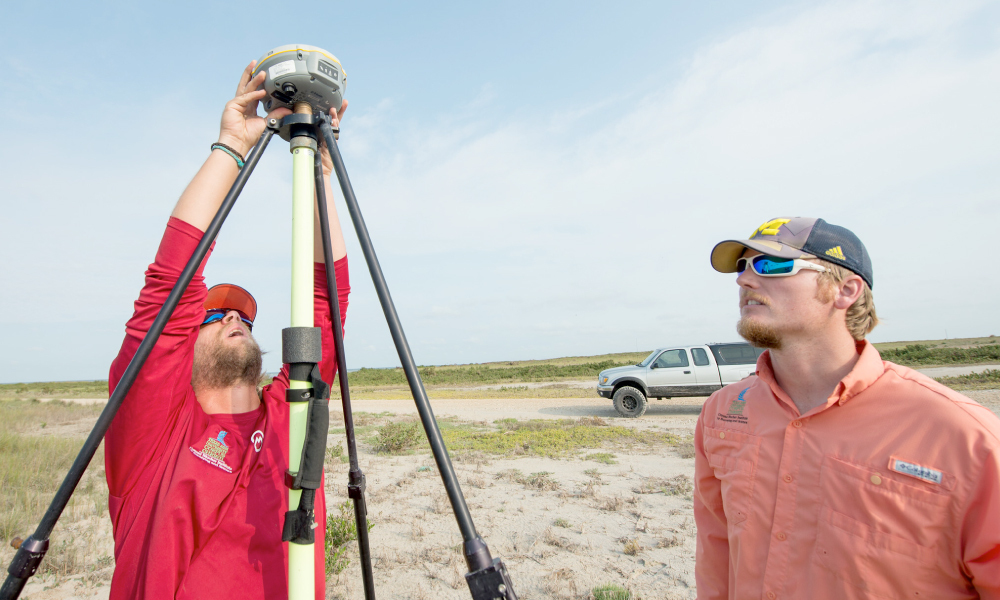
Members of Conrad Blucher Institute, Texas A&M University-Corpus Christi, collecting data for the update to a new program that defines the changing topography of Earth. Courtesy photo
Texas A&M-CC Leads National Spatial Reference System Update for Texas
As of Sept. 1, the Texas Spatial Reference Center at Texas A&M University-Corpus Christi will serve as the official resource to the new National Spatial Reference System and Texas State Coordinate System, which is housed within TAMU-CC’s Conrad Blucher Institute for Surveying and Science.
In leading the way as part of a national technological update, TAMU-CC’s work will transform the fields of surveying, cartography, and land-use planning.
The North American Datum update is the first in 40 years. Before that, the NAD of 1927 defined the geodetic (shape of the earth) network in North America. The U.S. National Geodetic Survey is set to introduce its replacement in 2023.
State Senator Juan “Chuy” Hinojosa (D-McAllen) and Rep. Todd Hunter (R-Corpus Christi) secured passage of a bill during the 87th Legislative Session appointing TSRC as the official resource to the new Spatial Reference System and Texas State Coordinate System definitions. Gov. Greg Abbott signed the bill into law June 7.
“The Island University is so thankful for the continued support we have received from our legislators, especially Senator Hinojosa, Representative Hunter, and Representative Herrero,” said Dr. Kelly M. Miller, TAMU-CC President and CEO.
Previously, surveyors relied on a point of reference, often a static monument or landmark, to base calculations.
“The 2022 National Spatial Reference Frame will rely on the Global Navigation Satellite System, which includes the Global Positioning System and others, and gravity to calculate the new datum,” said Dr. Davey Edwards, TSRC Director and TAMU-CC Professional Assistant Professor in the School of Engineering and Computing Sciences.
Edwards added that the planet’s tectonic plates are consistently moving in many directions over time.
“This movement and the deterioration of the static monuments makes the 2022 datum more relevant to the future of mapping and navigation,” he said.
To comply with the NGS update requirement that each state update its State Plane Coordinate System, Texas will increase its current five-zone definitions to 50 low-distortion zones. As a result of the sheer size of the state, the previously described zones created large areas of distortion within it, Edwards said.
“By creating smaller zones, we are able to stay within a low distortion projection allowing the projected measurements to be closer to the surface distances,” he said.
Looking ahead, Edwards said the TSRC will continue to work with stakeholders to provide horizontal and vertical control information for all mapping purposes, especially for emergency and floodplain management.





